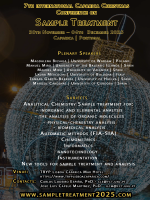Characterization of temperature-sensing and PIP2-regulation of TRPV1 ion channel at the C-terminal domain using NMR spectroscopy and Molecular Dynamics Simulations
DOI: 10.5584/jiomics.v4i2.158
Abstract
Transient receptor potential (TRP) channels are receptors of stimulating signals, such as temperature, taste, odor, and chemo- and mechano-stimuli. Temperature sensing TRP channels coincidently function as pain receptors, and are potential targets for substances of abuse, including alcohol and illicit drugs. TRP vanilloid type 1 (TRPV1) channel is activated by heat (>43 °C) and capsaicin under the tight regulation of membrane-associated second messenger, PIP2 (phosphatidylinositol-4,5-bisphosphate), responds to noxious stimuli and inflammatory substances, and could potentially modulate effects of alcohol and drugs of abuse. Despite the crucial roles in mediating signal transductions at both peripheral and central nervous systems, TRP channels are poorly understood in the context of structures and mechanisms. In this letter, we describe our initial structural characterization of the TRPV1 C-terminal domain, the putative temperature sensing and PIP2-regulatory domain, using NMR spectroscopy and molecular dynamics simulations. Both experimental and computational models suggest the C-terminal domain is intrinsically unstructured at room temperature with and without lipid bicelles. Elevated temperature and PIP2-binding can induce substantial conformational changes and formation of considerable secondary structural components in the C-terminal domain, which could be transduced to the transmembrane domain to potentially sensitize the channel.









